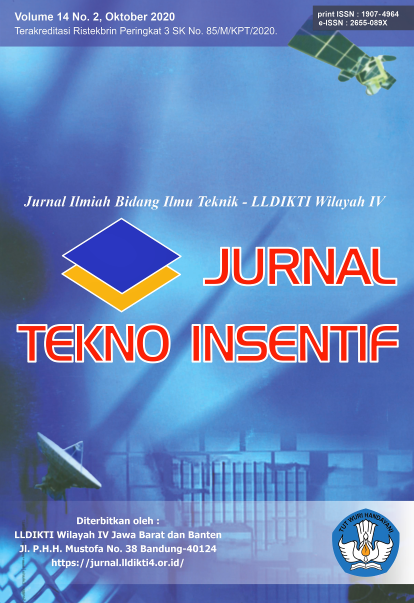ANALISIS EKO-EFISIENSI DAUR ULANG AIR LIMBAH DI PT. CHEMCO HARAPAN NUSANTARA
Abstrak
Abstrak - PT. Chemco Harapan Nusantara (PT CHN) membutuhkan air bersih dalam jumlah besar untuk digunakan sebagai air proses dalam kegiatan proses produksi. Adapun total kebutuhan air bersih untuk semua proses produksi yaitu sebanyak 10.450 m3/ bulan. PT CHN dapat menghasilkan produk yang bernilai jual dari penggunaan air bersih tersebut. Di samping itu juga menghasilkan air limbah yang dapat mencemari lingkungan. Tujuan dari penelitian ini adalah untuk menerapkan metode daur ulang air limbah pada PT CHN sehingga dapat mengurangi dampak buruk bagi lingkungan akibat pembuangan air limbah dan menghasilkan penghematan secara ekonomi terutama pada saat Pandemi Covid19 ini. Penerapan dari metode tersebut dilakukan dengan cara mengolah air limbah di dalam instalasi pengolahan air limbah, kemudian mengolah kembali air tersebut di dalam instalasi pengolahan air bersih. Air olahan yang diperoleh kemudian di distribusikan ke masing-masing proses produksi pemakai air bersih. Metode yang digunakan dalam penelitian ini adalah dengan wawancara dan survei secara langsung di lokasi kemudian menganalisis hasil penelitian dengan teknik analisa data coding, entering, cleaning, display dan analyzing. Berdasarkan hasil penelitian menunjukkan bahwa penerapan metode daur ulang air limbah mampu mengubah seluruh air limbah menjadi air bersih yang dapat digunakan untuk proses produksi , sehingga tidak mencemari lingkungan. Hal tersebut terbukti bahwa pada prosesnya seluruh air limbah dimasukkan ke dalam instalasi pengolahan air limbah yang kemudian diolah lagi di WTP dan air hasil olahan dari WTP tersebut digunakan kembali sebagai process water. Penerapan metode daur ulang air limbah yang dilakukan oleh PT CHN juga dapat menguntungkan secara ekonomi yaitu dengan dapat mengurangi pemakaian air WTP Jababeka sebesar 77,5 %, sehingga mampu menghemat biaya pengeluaran pembelian air sebesar Rp 99.187.652 /bulan.
Abstract - PT. Chemco Harapan Nusantara (PT CHN) requires large amounts of clean water to be used as process water in production process activities. The total need for clean water for all production processes is 10.450 m3 / month. PT CHN can produce products of value from the use of clean water. Besides that, it also produces waste water which can pollute the environment. The purpose of this research is to apply the wastewater recycling method at PT CHN so as to reduce adverse environmental effects due to waste water disposal and generate economic savings, especially during the Covid Pandemic19. The application of this method is done by treating wastewater in a wastewater treatment plant, then reprocessing the water in a clean water treatment plant. The processed water obtained is then distributed to each of the clean water user production processes. The method used in this study is to interview and survey directly on site and then analyze the results of research with data analysis techniques coding, entering, cleaning, display and analyzing. Based on the results of the study showed that the application of the wastewater recycling method is able to convert all wastewater into clean water that can be used for the production process, so it does not pollute the environment. This is evident that in the process all wastewater is put into a wastewater treatment plant which is then treated again at the WTP and the treated water from the WTP is reused as process water. The application of the wastewater recycling method conducted by PT CHN can also be economically profitable, namely by being able to reduce the use of Jababeka's WTP water by 77,5%, thereby being able to save on the cost of water purchase expenses of Rp 99.187.652 / month.


















